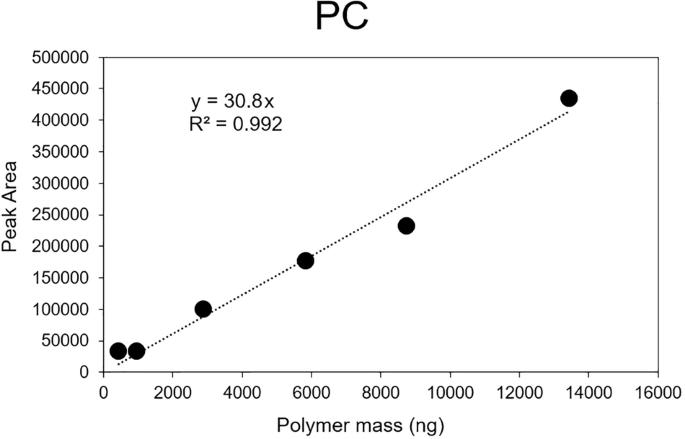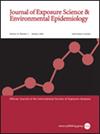Inhalable microplastics and plastic additives in the indoor air of chemical laboratories
IF 4.7
3区 医学
Q2 ENVIRONMENTAL SCIENCES
Journal of Exposure Science and Environmental Epidemiology
Pub Date : 2025-03-29
DOI:10.1038/s41370-025-00768-0
引用次数: 0
Abstract
While recognition of airborne microplastics is increasing, there are still limited data on the microplastics within the aerosol size fractions most relevant to human inhalation (PM10 and PM2.5). Additionally, there are concerns that many of the additives used in plastic formulations have endocrine-disrupting properties, which could increase the hazards associated with microplastic exposure. To better understand the toxicological risks associated with airborne microplastics, more data are urgently needed on the mass concentrations of both microplastics and the related chemical additives in the air we breathe. Inhalation exposure to plastic-related species is currently uncertain in chemical laboratory workplaces. Using a Pyrolysis Gas Chromatography Mass Spectrometry (Pyr-GC/MS) based method, the airborne mass concentrations of both polymeric material and small molecule plastic additives were determined in inhalable air from two indoor locations. This method represents a fast, direct technique that can be used to better standardize airborne microplastic measurements. The PM2.5 and PM10 concentrations of seven different polymers were determined, with average plastic concentrations of 0.51 μg m−3 for the PM2.5 samples and 1.14 µg m−3 for the PM10 samples. Polycarbonate, polyvinylchloride, and polyethylene had the highest airborne concentrations in the inhalable fraction of air. Simultaneously, the airborne concentrations of plastic additives were determined, with phthalate-based plasticizers having an average concentration of 334 ng m−3 across all air samples.

化学实验室室内空气中可吸入的微塑料和塑料添加剂。
背景:虽然人们对空气中微塑料的认识正在增加,但关于与人类吸入最相关的气溶胶大小分数(PM10和PM2.5)中的微塑料的数据仍然有限。此外,人们担心塑料配方中使用的许多添加剂具有干扰内分泌的特性,这可能会增加与微塑料接触相关的危害。目的:为了更好地了解空气中微塑料的毒性风险,迫切需要更多关于我们呼吸的空气中微塑料及其相关化学添加剂的质量浓度的数据。在化学实验室工作场所吸入接触与塑料有关的物种目前尚不确定。方法:采用基于热解气相色谱-质谱(Pyr-GC/MS)的方法,测定两个室内地点可吸入空气中聚合物材料和小分子塑料添加剂的质量浓度。这种方法代表了一种快速、直接的技术,可以用来更好地标准化空气中的微塑料测量。结果:测定了7种不同聚合物的PM2.5和PM10浓度,PM2.5样品的平均塑料浓度为0.51 μg m-3, PM10样品的平均塑料浓度为1.14 μg m-3。在可吸入的空气中,聚碳酸酯、聚氯乙烯和聚乙烯的浓度最高。同时,测定了空气中塑料添加剂的浓度,邻苯二甲酸酯类增塑剂在所有空气样本中的平均浓度为334 ng m-3。影响:微塑料及其化学添加剂在室内空气的可吸入部分(PM10)内进行定量,使用直接质谱技术,样品制备最少。这一信息进一步增进了对与室内空气接触有关的危害的认识,并为大量量化与塑料有关的空气中污染物提供了一种有用的方法。
本文章由计算机程序翻译,如有差异,请以英文原文为准。
求助全文
约1分钟内获得全文
求助全文
来源期刊
CiteScore
8.90
自引率
6.70%
发文量
93
审稿时长
3 months
期刊介绍:
Journal of Exposure Science and Environmental Epidemiology (JESEE) aims to be the premier and authoritative source of information on advances in exposure science for professionals in a wide range of environmental and public health disciplines.
JESEE publishes original peer-reviewed research presenting significant advances in exposure science and exposure analysis, including development and application of the latest technologies for measuring exposures, and innovative computational approaches for translating novel data streams to characterize and predict exposures. The types of papers published in the research section of JESEE are original research articles, translation studies, and correspondence. Reported results should further understanding of the relationship between environmental exposure and human health, describe evaluated novel exposure science tools, or demonstrate potential of exposure science to enable decisions and actions that promote and protect human health.

 求助内容:
求助内容: 应助结果提醒方式:
应助结果提醒方式:


